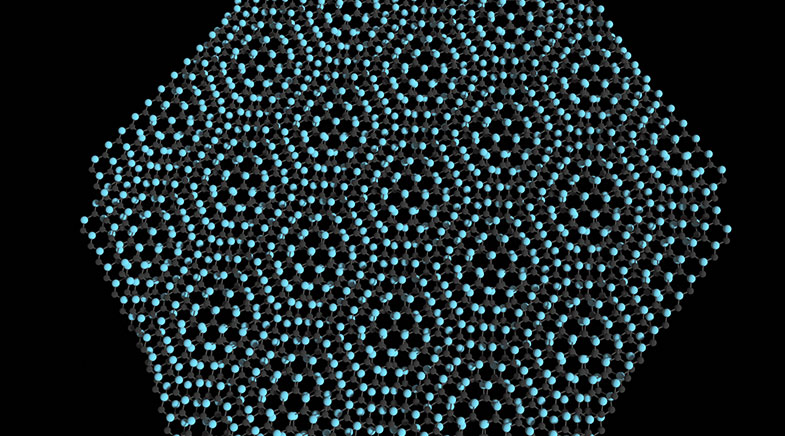Splitting seawater to produce green hydrogen
-
- from Shaastra :: vol 03 issue 10 :: Nov 2024

New technology splits seawater for green hydrogen production, circumventing the need for freshwater.
In a move that would boost India's efforts to produce green hydrogen, researchers have developed a technology that can use seawater for water splitting. They have developed cost-effective and scalable nanocatalysts that help produce hydrogen (as well as oxygen) by splitting seawater.
More than 95% of hydrogen fuel produced today across the world uses steam-methane reforming, a process in which high-temperature steam (up to 1000°C) is used to produce hydrogen from a methane source, such as natural gas. But this doesn't qualify as green hydrogen because carbon dioxide emissions are associated with it.
The Government of India, which in 2022 announced a National Green Hydrogen Mission, insists on using water electrolyser technology, which splits water to produce hydrogen. Besides, it encourages the industry to use renewable energy for meeting energy requirements, making the process totally green.
However, Sundara Ramaprabhu, Emeritus Professor in the Department of Physics at the Indian Institute of Technology Madras (IITM), who led the research, has a concern – the current crop of water electrolysers requires fresh or deionised water for splitting. As and when the electrolyser technology becomes more common, it may put pressure on the availability of freshwater, which is already scarce in many parts of the country, particularly in summer. "The best option would be to turn to seawater, which is abundantly available," he says.
"The best option would be to turn to seawater, which is abundantly available."
But seawater contains chloride ions in the form of sodium chloride, potassium chloride and magnesium chloride, which are highly corrosive. They can corrode the electrodes and electrode supports, besides making the reactions to produce hydrogen and oxygen sluggish.
Using certain electrocatalysts that can limit the production of chlorine at the anode can actually improve the performance of the system significantly. The catalysts, reported in the International Journal of Hydrogen Energy (bit.ly/Ramaprabhu), are based on a metal organic framework, contain nickel-cobalt-cobalt oxide nanoparticles and are embedded with amorphous carbon. These nanocatalysts are chlorine corrosion-resistant up to a certain voltage, say 2 to 2.2V, says Ramaprabhu. Besides, these catalysts are bi-functional, meaning that they catalyse production of both hydrogen and oxygen at electrodes.
"The work is significant, undeniably, however there is a long way to go for practical viability," says Muhammed Musthafa, Associate Professor of Chemistry at the Indian Institute of Science Education and Research, Pune.
The team, on its part, is currently installing a 100 litre-per-hour hydrogen production facility at IITM for technology demonstration.
Have a
story idea?
Tell us.
Do you have a recent research paper or an idea for a science/technology-themed article that you'd like to tell us about?
GET IN TOUCH














